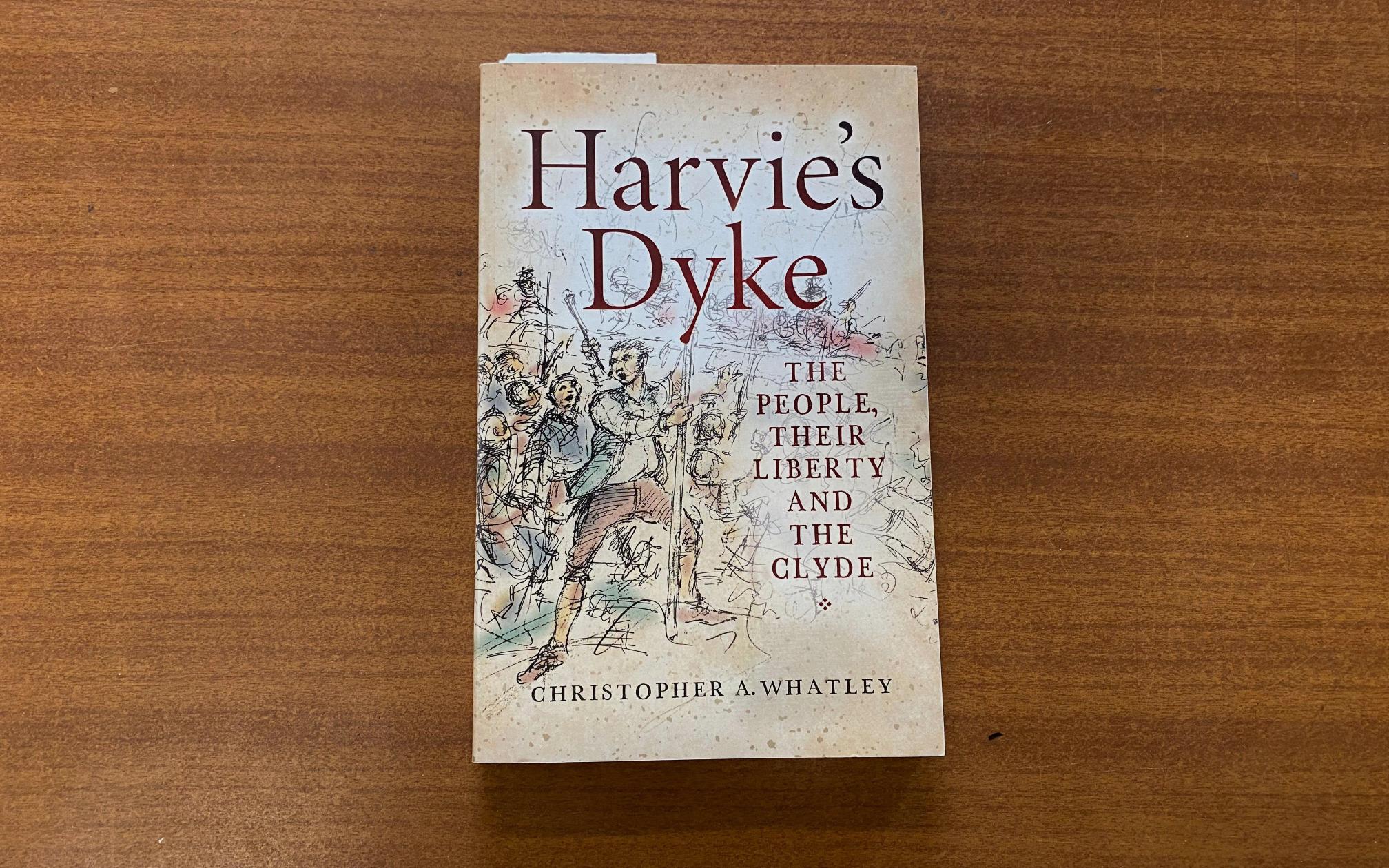In June 2025, the Society of Antiquaries of Scotland and the Royal Society of Edinburgh co-hosted a fascinating lunch-time talk by Christopher A Whatley, which our Senior Access Officer, Eleisha Fahy, was delighted to attend online. She reports…
Professor Whatley has rescued the story of Harvie’s Dyke from relative public obscurity, but in the 1820s, a rich landowner’s obstruction of a long-used route along the River Clyde was notorious.
Thomas Harvie, a distiller, had bought the Westthorn estate on the then outskirts of Glasgow, but did not at all like the weavers, miners and other members of the public using the riverside path which edged his land. However, when Harvie had walls constructed to block such public passage, the resulting furore triggered a campaign to reinstate access along the right of way. Direct action saw the dyke demolished, followed by the arrest and jailing of some of the participants involved, but it was immediately reinstated under armed guard. The outrage at the landowner’s actions fuelled public subscriptions – as well collections held at the Glasgow Fair and elsewhere, there were songs written and fund-raising events – and a boycott of his wares and establishments ensued. It took three years of legal work to gather the necessary evidence of public use, but the right of way was successfully vindicated in court. Harvie appealed the decision, thinking his wealth would over-ride the capacity of his far poorer opponents to sustain their campaign. However, he was again unsuccessful; his thrawn refusal to acknowledge the public’s right resulted in bankruptcy.
The talk was a captivating and well-illustrated account. In particular, I’d never before seen pictures of Harvie’s Dyke itself, previously imagined as equivalent to the tiresome everyday access obstructions of the sort ScotWays is still alerted to and with which the access officers of our Councils and National Parks have to contend despite diminishing resources. But no, the largest wall was a massive construction, 12ft high, fortified with pikes and broken glass, and equipped with a watchtower! In the face of such blatant unreasonableness, it is perhaps unsurprising that such an effective campaign against it was set in motion. Professor Whatley also very usefully set out the historical context of these events, falling as they did in the decade after 1820’s Radical War, a time when activists had not only been jailed, but executed or transported for their beliefs. The campaign against Harvie’s Dyke is an inspiring example of local activism – radical, social and environmental – so the story of this community’s persistence in defending the delights of walking beside the Clyde is one that deserves to be more widely known.
It was acknowledged during the talk that this case is notable in legal circles, so I will be clear here that from a ScotWays perspective, the Harvie’s Dyke case is not at all obscure, even though the details of the associated dramatic events have faded from public memory. This right of way’s long battle through the courts pre-dates ScotWays’ founding by over 20 years, but the case law it established assisted later right of way arguments. It is arguably as important as the better known nineteenth century right of way cases of Glen Tilt and Jock’s Road. Being case law, it remains relevant today – and is referenced in both our Law Guide and Ken, our online Knowledge Base – illuminating our understanding of positive prescription and the legal underpinnings of non-acquiescence in the closure of public rights of way. Those who love Scotland’s outdoors thus have much to be thankful for in the efforts of the people of Glasgow and the villages now incorporated within it.
Following the talk, there was a lively audience discussion, to which regrettably I could not contribute for technical reasons. Most welcome though was a mention of the ongoing obstruction of the Radical Road in Edinburgh’s Holyrood Park, upon which ScotWays contains to be engaged with others in seeking a resolution.
The once disputed right of way past Harvie’s Dyke now forms part of the Clyde Walkway. If you know what you’re looking for, the remains of the dyke can still be seen – perhaps it needs its own plaque to celebrate its significant place in Scotland’s history? The importance of this riverside route to Scottish access law is the reason it was already included on a list of routes to be added to our Heritage Paths webpages once their Scottish Mountaineering Trust funded overhaul is complete. Professor Whatley’s book is thus both timely and welcome and, having now read it, I whole-heartedly commend it to everyone interested in public access and social history.
Christopher A Whatley is Emeritus Professor of Scottish History at the University of Dundee. His book, Harvie’s Dyke: The People, their Liberty and the Clyde (2025) was published in July by Birlinn: https://birlinn.co.uk/product/harvies-dyke/
ScotWays is pleased to announce that Professor Whatley will be speaking at our AGM on 22nd November, prior to the formal business.

